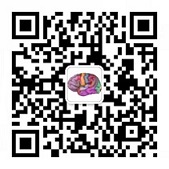Primidone (PRM)
1) The main possible mechanism: Primidone itself has anticonvulsant activity, and its two metabolites, phenobarbital (the concentration of which tends to be higher than the concentration of primidone itself during long-term use) and phenethylmalonamide (PEMA), also have anticonvulsant activity. It can promote the opening of neuronal chloride channels, increase the inhibitory effect of GABA, and reduce the excitatory effect of glutamate.
2) Therapeutic indications: Suitable for all types of epileptic seizures except absence seizures.
3) Warning: Contraindicated in patients with porphyria and those allergic to this drug or phenobarbital. In addition, considering the possible adverse reactions to the nervous system, it is generally only considered when other drugs are ineffective and is not used as a first-line drug. It is rarely used at present.
4) Dosage for children: Click to view the dosage for children of different ages and weights.
5) Major adverse reactions in children: The most common early side effects are ataxia and dizziness, and a few may include nausea, anorexia, vomiting, fatigue, irritability, mood disorders, diplopia, nystagmus, drowsiness, and rash.
6) Interaction with other anti-epileptic drugs: Phenytoin and carbamazepine can increase the conversion of primidone to phenobarbital (which may lead to an overdose of phenobarbital, and the amount of primidone needs to be appropriately reduced when used together).
7) Interaction with non-anti-epileptic drugs: Concomitant use with anticoagulants, corticosteroids, digitalis, digoxin, doxycycline hydrochloride or tricyclic antidepressants may result in increased metabolism of these drugs and reduced efficacy. It can reduce the intestinal absorption of vitamin B12, increase the excretion of vitamin C by the kidneys, and speed up the metabolism of vitamin D. Isoniazid significantly reduces the conversion of primidone to phenobarbital.

 English
English  简体中文
简体中文 